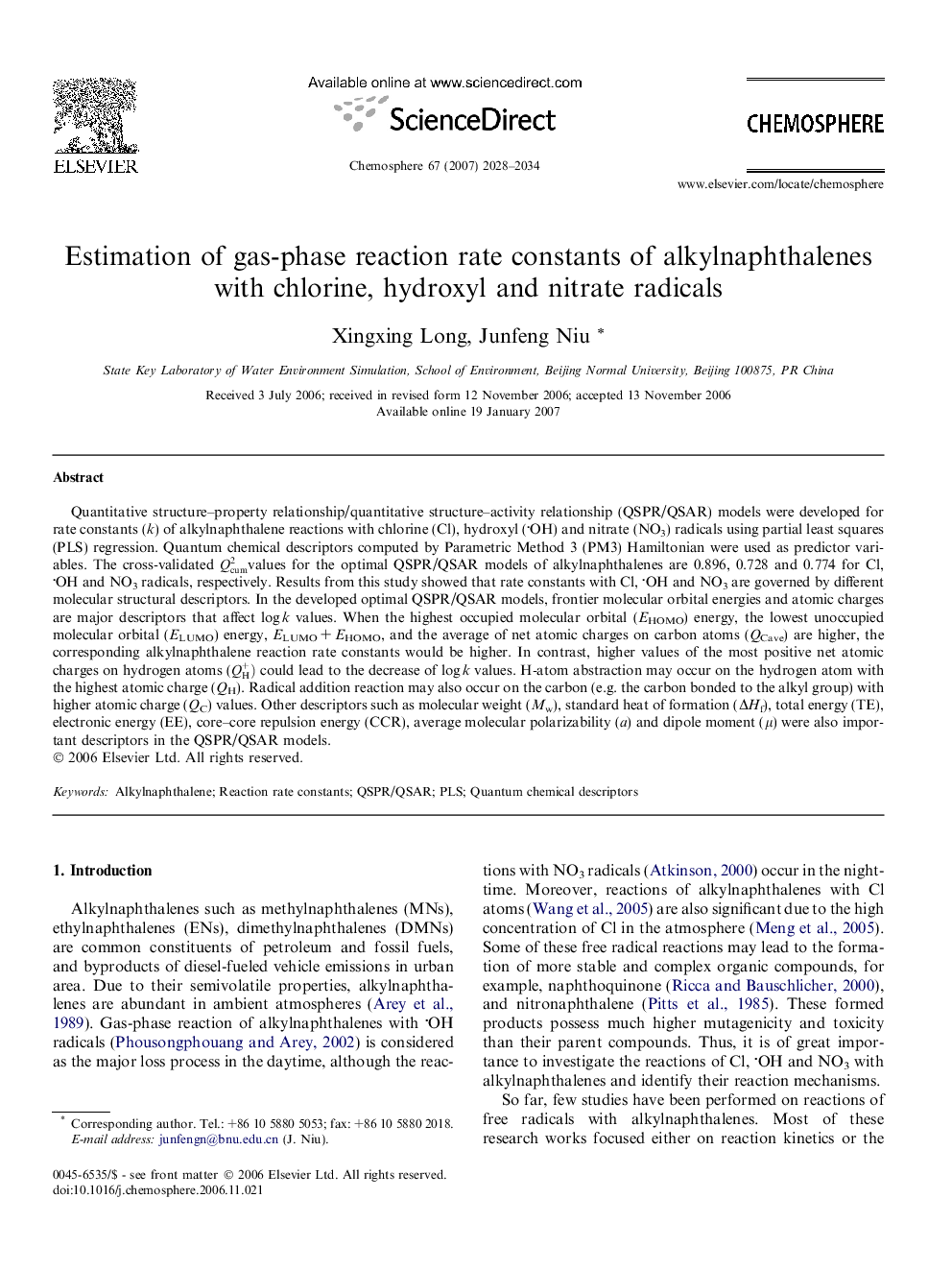| کد مقاله | کد نشریه | سال انتشار | مقاله انگلیسی | نسخه تمام متن |
|---|---|---|---|---|
| 4414937 | 1307731 | 2007 | 7 صفحه PDF | دانلود رایگان |

Quantitative structure–property relationship/quantitative structure–activity relationship (QSPR/QSAR) models were developed for rate constants (k) of alkylnaphthalene reactions with chlorine (Cl), hydroxyl (OH) and nitrate (NO3) radicals using partial least squares (PLS) regression. Quantum chemical descriptors computed by Parametric Method 3 (PM3) Hamiltonian were used as predictor variables. The cross-validated Qcum2values for the optimal QSPR/QSAR models of alkylnaphthalenes are 0.896, 0.728 and 0.774 for Cl, OH and NO3 radicals, respectively. Results from this study showed that rate constants with Cl, OH and NO3 are governed by different molecular structural descriptors. In the developed optimal QSPR/QSAR models, frontier molecular orbital energies and atomic charges are major descriptors that affect log k values. When the highest occupied molecular orbital (EHOMO) energy, the lowest unoccupied molecular orbital (ELUMO) energy, ELUMO + EHOMO, and the average of net atomic charges on carbon atoms (QCave) are higher, the corresponding alkylnaphthalene reaction rate constants would be higher. In contrast, higher values of the most positive net atomic charges on hydrogen atoms (QH+) could lead to the decrease of log k values. H-atom abstraction may occur on the hydrogen atom with the highest atomic charge (QH). Radical addition reaction may also occur on the carbon (e.g. the carbon bonded to the alkyl group) with higher atomic charge (QC) values. Other descriptors such as molecular weight (Mw), standard heat of formation (ΔHf), total energy (TE), electronic energy (EE), core–core repulsion energy (CCR), average molecular polarizability (a) and dipole moment (μ) were also important descriptors in the QSPR/QSAR models.
Journal: Chemosphere - Volume 67, Issue 10, May 2007, Pages 2028–2034